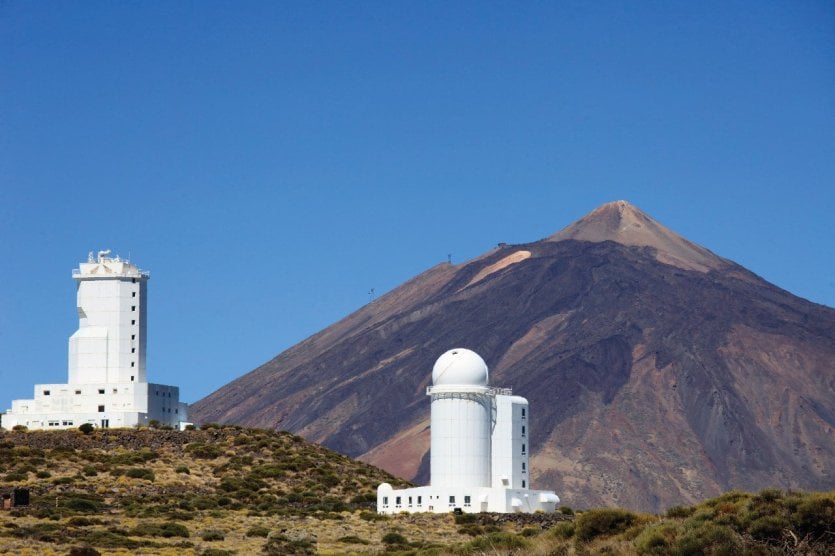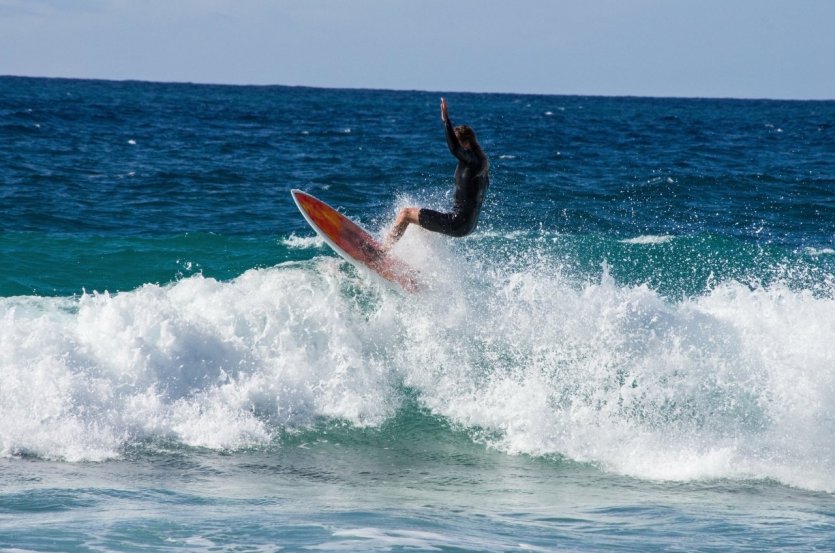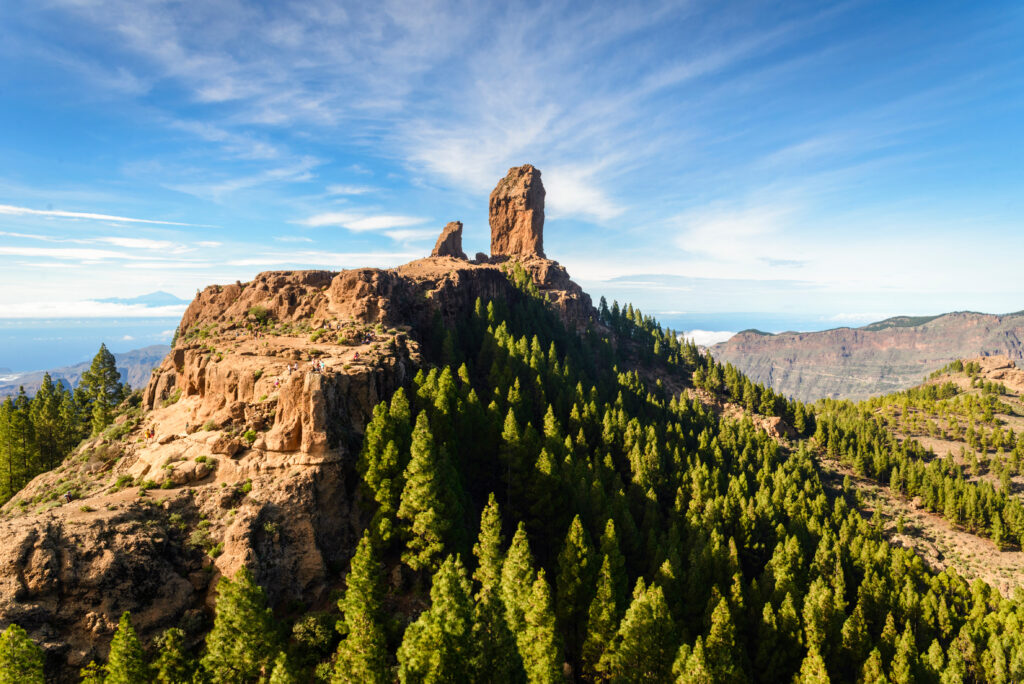The Canary Islands often conjure up images of dream beaches, sun and idleness. But the archipelago is full of more surprises than you can imagine! To explore its seven islands is to discover a new land and a different landscape every time. From the beaches of Fuerteventura to the volcanoes of Lanzarote, you’ll be amazed by the colorful landscapes and, above all, by the extraordinary climate, which gives the Canaries the most hours of sunshine in Europe! Petit Futé offers you its 10 must-see experiences to find out what to do in the Canaries. The Canaries are also included in our ranking of the best budget vacation destinations!
1- Discover the starry sky

With its pleasant climate and often clear skies, the Canary archipelago is the ideal place for stargazing. The Teide Observatory in Tenerife is one of the most important in the world and the largest in Europe. Guided tours are organized to discover the work of researchers who come from the four corners of the globe to take advantage of the qualities of the Canarian sky. The heights of Tenerife are the ideal place to witness an incredible stellar spectacle every evening. If you come in August, many shooting stars will be passing overhead… Take the opportunity to make a wish!
2- Diving in El Hierro

El Hierro is the smallest and most little-known of the archipelago’s islands. Located in the far west, it was even considered the end of the world until 1492. Its volcanic landscape still gives this impression today… But what you really shouldn’t miss is the seabed. Near the fishing pier of La Restinga, in the south of the island, is a reserve that will delight diving enthusiasts. This underwater landscape is best explored at night: an unforgettable experience!
3- Surfing at El Quemao

On the island of Lanzarote, El Quemao is considered one of the best spots in the world by surfers. Here, the most expert surfers face strong waves and impressive tubes. Just opposite is the charming little village of La Santa, which offers all the facilities you need for a sporting holiday: accommodation, restaurant, equipment hire… Also known as the “Hawaii of Europe“, Lanzarote is one of our Top 10 winter surfing destinations for 2024!
4- The island of La Gomera

Sparsely populated, the island of La Gomera is a hiker’s paradise for its interesting terrain and unspoilt nature. The island’s highest point, Alto de Garajonay, rises to 1,487 meters. On a clear day, you can see an exceptional panorama of the surrounding islands from its summit. But what is most fascinating about the island of La Gomera is the whistling language adopted by its inhabitants: Silbo Gomero. It is one of the few non-verbal languages recognized by the European Union as a language in its own right. Listen carefully, and you’ll be amazed by the impressive diversity of sounds that can be used to whistle entire conversations!
5- The beaches of Fuerteventura

Fuerteventura is the place to be for beach lovers, scuba divers and sandcastle builders alike! There are over 70 beaches to discover on the island. Cofete, the most secret, is at the southernmost tip and can be reached by a 20 km dirt road reserved for 4×4 vehicles. But it’s on the eastern tip of the island that you’ll find the most paradisiacal beaches. Here, the fine sand comes directly from the Sahara, which blows it in during major storms. Don’t miss the dunes of Corralejo, a real piece of Africa with typically Saharan dunes!
6- Parque Nacional de la Caldera a Taburiente

A natural frontier between the north and south of the island of La Palma, this national park is a favorite playground for hikers. Its steep terrain is dotted with waterfalls and streams. La Caldera is the world’s second-largest crater. It is surrounded by peaks such as El Roque de los Muchachos, the highest point on the island at 2,351 m. Don’t hesitate to follow the hiking trails that will help you discover the beauties of this park, such as the “Cascada de colores”… You won’t be disappointed!
7- Las Palmas

The capital of Gran Canaria, Las Palmas is a city with a Latino flavour, where it’s good to stroll. The Vegueta district retains all the charm of 15th and 16th century colonial architecture. This is where you’ll find the imposing Santa Ana de las Palmas Cathedral, a skilful blend of Gothic, Baroque, Classical and Canarian styles. And don’t miss the Christopher Columbus Museum. Legend has it that the explorer was welcomed into this house during his voyage…
8- Explore the depths

The Canary Islands are a treasure trove of historical treasures that will fascinate the most exploratory among you! Jameos del Agua, northwest of Lanzarote, is one of the finest examples of the fusion of art and nature. Here, you can explore underground cavities created by the eruption of the Corona volcano over 3,000 years ago, before finding yourself in a tourist complex with swimming pool, bars and auditorium. This crazy project is the work of César Manrique, a painter and architect who has done a lot for the image of his native island, Lanzarote.
9- Santa Cruz de Tenerife Carnival

After Rio de Janeiro, the Santa Cruz de Tenerife Carnival is considered the second most popular in the world. Every year, this colorful event brings thousands of people into the streets. Canarians and tourists alike take advantage of the evening to go out and have fun until the end of the night in a good-natured atmosphere. In 1987, the Santa Cruz Carnival went down in history with over 200,000 people dancing in the streets: a world record! This year, it takes place from February 22 to March 5, with a Caribbean theme. Find out more
10- Discover a volcanic archipelago

The seven islands that make up today’s Canaries came into being after millions of years of volcanic activity. To discover the traces of this extraordinary past, visit Timanfaya on the island of Lanzarote. This 5,000-hectare national park is home to the montañas del Fuego, which covered ¾ of the island in lava and ash during their great eruption in the 18th century. This lunar landscape is home to one of the most original restaurants in the world: El Diablo, built by artist and architect César Manrique. Here, you can enjoy meats grilled over a volcano fire! In fact, the grill is located above a volcanic chimney. An experience not to be missed!
11- La Laguna in Tenerife

Located in the north of Tenerife, La Laguna is a town steeped in history and charm. The island’s former capital, it was founded in the early 16th century on rich soil shaped by volcanic activity in the Canary Islands. Listed as a UNESCO World Heritage Site, La Laguna’s cobbled streets and colorful buildings are a delight to behold. In the heart of the town, the University of La Laguna, one of the oldest inSpain, stands alongside impressive religious buildings, such as the cathedral, a blend of Gothic, Baroque and neoclassical styles. This jewel of Tenerife offers a unique cultural experience, where history mingles with everyday life in a remarkable architectural setting.
12- The Maspalomas dunes in Gran Canaria

To the south of Gran Canaria, in the Canary archipelago, lies the striking natural spectacle of the Maspalomas dunes. These sand formations, sculpted by wind and ocean, are reminiscent of the great deserts, even though they originated on a volcanic island. Stretching for kilometers, the dunes offer a striking contrast with the blue of the Atlantic, creating an almost surreal landscape. The site, rich in biodiversity, is also known for its emblematic lighthouse, which keeps watch over this sea of sand. Admiring the sunset from the Maspalomas dunes is an unforgettable experience. To visit the Maspalomas dunes is to immerse yourself in a world where time seems suspended, an oasis of tranquility in the heart of the Atlantic.
13- Puerto de la Cruz Botanical Garden, Tenerife

The Puerto de la Cruz Botanical Garden in Tenerife is a magical place. Created in the 18th century, it was designed to acclimatize exotic plants. Today, the garden is a treasure trove of biodiversity, with an incredible variety of plants and flowers. To stroll through the garden is to lose yourself in a world of greenery, where every corner reveals surprising species. The shady paths offer refreshing breaks in the Tenerife sunshine. This garden is a must for those looking to escape into nature and discover the beauty of plants from all over the world.
14- Cueva de los Verdes, Lanzarote

The Cueva de los Verdes in Lanzarote is an impressive site, created by the island’s volcanic activity. This cave offers a unique insight into the natural forces that have shaped the island. Inside, lava tunnels form an extraordinary subterranean landscape, with rocks of varying shapes and colors. The cave’s lighting accentuates these features, creating a special atmosphere. To visit the Cueva de los Verdes is to explore a different side of Lanzarote, away from the beaches and the sun. It’s an interesting experience for those who love discovering geological wonders and secrets hidden beneath the earth’s surface. Every passageway in this cave tells a story about nature and its volcanic past.
15- Roque Nublo in Gran Canaria

Roque Nublo in Gran Canaria is a truly impressive natural site. It’s a large rock that stands in the middle of the island, a vestige of the region’s ancient volcanic activity. To reach the summit of Roque Nublo is to hike through varied landscapes and enjoy spectacular views over the island. This natural monument is not only a geological wonder, but also an important symbol for the people of Gran Canaria. At the top, hikers discover a breathtaking panorama that stretches for miles. It’s an ideal place for those who appreciate nature and hiking, an unforgettable experience in the majestic setting of Gran Canaria. A visit to Roque Nublo is a moment of tranquillity and beauty, far from the hustle and bustle of the beaches.
Which is the most beautiful of the Canary Islands?
- Tenerife: The largest of the islands, it boasts a wide range of beaches, the Teide National Park and a lively nightlife. Tenerife is ideal for those seeking a mix of natural and urban activities.
- Gran Canaria: Known for its sandy beaches, notably the dunes of Maspalomas, and its cosmopolitan capital, Las Palmas. Perfect for lovers of beaches and urban culture.
- Lanzarote: Renowned for its lunar volcanic landscapes, especially the Timanfaya National Park. Lanzarote is ideal for nature and art lovers, with the works of César Manrique scattered across the island.
Getting around the Canary Islands
- Car rental: This is one of the most practical ways to explore the islands, especially if you want to discover less accessible areas. Car rental is available at airports, ports and major tourist areas.
- Public transport: Each island has its own bus network (known locally as “guaguas”). Buses serve the main towns, tourist attractions and beaches. However, bus schedules are often limited, especially in less populated areas.
- Cabs: Available on all islands, these are handy for short trips or if you don’t want to drive. Cabs can be relatively expensive for longer distances.
- Ferries: For inter-island travel, ferries are a popular option. Several companies offer regular services between the main islands.
What is the currency of the Canary Islands?
The currency used in the Canary Islands is the Euro (€), as the archipelago is part of Spain and, by extension, the European Union. Most hotels, restaurants and stores widely accept credit and debit cards, but cash is still useful, especially in less touristy areas or for small purchases. ATMs are readily available in most urban and tourist areas.
Text taken from: https://www.petitfute.co.uk






